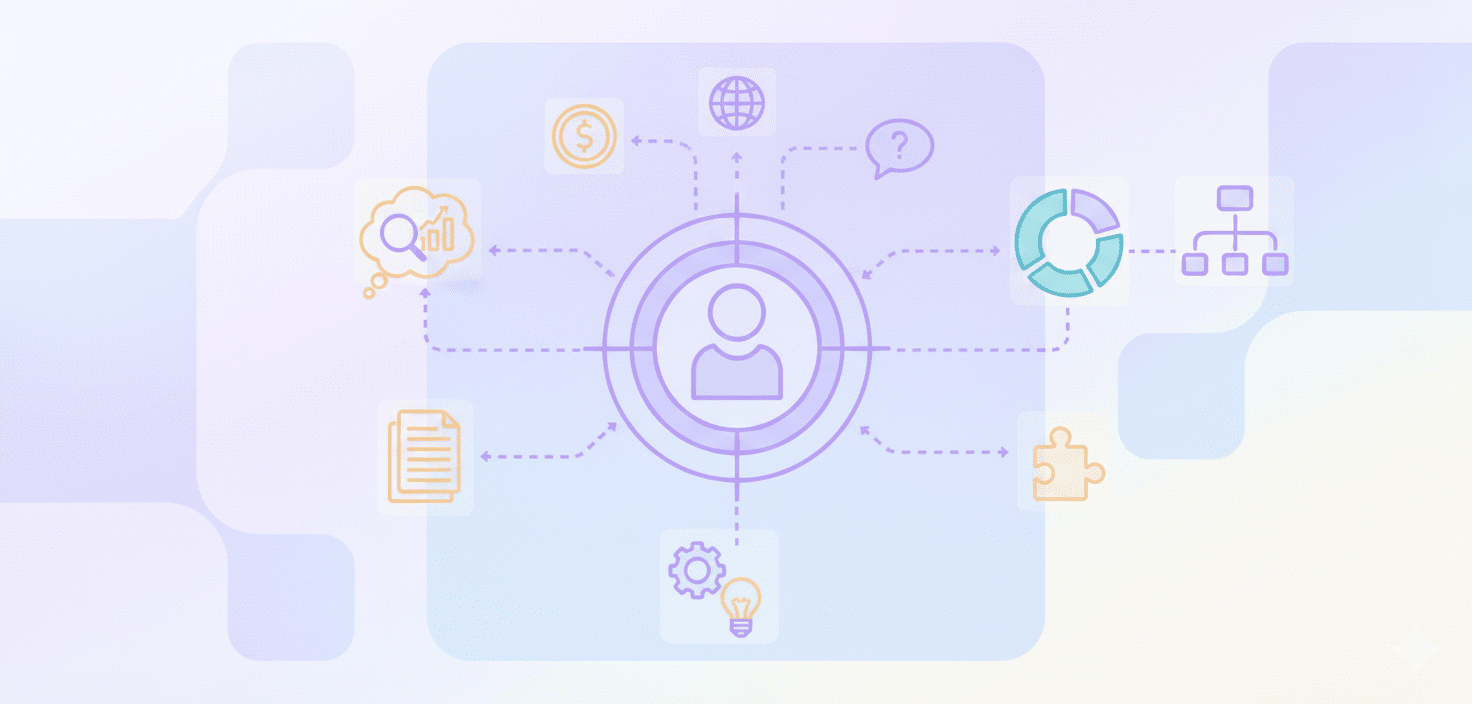市场分析
什么是 SaaS 理想客户画像 (ICP)?

什么是 SaaS 理想客户画像 (ICP)?
SaaS理想客户画像 (ICP) 是对能从您的SaaS产品或服务中获益最多的公司的全面描述。
为了识别真正能让您的目标受众脱颖而出的特质,这不仅仅是简单的统计数据。
拥有明确ICP的SaaS公司可能会经历高达 68%的变化 在赢率方面 (LinkedIn, 无日期),这可能会影响广告重心和销售效率 (M1-Project, 无日期)。
为确保其符合实际市场需求,请记住,明确定义的ICP是动态的,必须经常更新,以反映市场变化和您产品的开发。
理想的SaaS客户有哪些关键特征?
理想的SaaS消费者展现出公司特征、行为特征、技术特征和人口统计学特征的组合,这些特征与您产品的价值主张高度契合。
- 人口统计学和企业画像特征
- 例子包括收入、行业和公司规模。
- 给出一个基本概念
- 行为特征
- 痛点、购买触发因素和动机是其中几个例子。
- 表明客户需要SaaS解决方案。
- 技术特性
- 例子包括首选技术、集成和当前工具。
示例:
营销自动化SaaS可能面向正在为潜在客户开发而苦恼的中型电商企业(企业特征),这些企业使用HubSpot(技术特征),并旨在提高销售转化率(期望结果)。
了解这些特征有助于实现目标明确的营销和销售工作,通过集中关注最有可能从您的SaaS产品中受益的客户,从而提高客户获取和留存。
如何为您的SaaS构建理想客户画像?
为您的SaaS构建理想客户画像 (ICP) 始于数据收集,终于持续完善。
- 收集数据
- 分析:
- 人口统计、心理特征、行为和交易数据
- 来源:问卷调查、访谈、网站分析、CRM平台、购买历史
- 制定ICP模板
包括:
- 行业
- 公司规模
- 年收入
- 地域
- 技术栈
- 痛点
- 购买偏好
- 持续优化
- 随着市场和产品的演变,利用真实数据和洞察更新您的ICP。
示例:
一家SaaS公司最初可能将所有小型企业作为目标,但会细化其理想客户画像,以专注于那些拥有10-50名员工、使用特定营销自动化工具并在潜在客户开发方面遇到困难的营销机构。
- 与销售团队协作
将销售团队纳入理想客户画像创建过程,以利用他们对客户行为和偏好的直接洞察力,从而提高准确性。
ICP与买家画像有何不同?
一个 ICP 识别出 理想的公司匹配,侧重于广泛的特征,而一个 买家画像 代表一个 个人客户 在这些公司内部,详细说明其动机和痛点。
|
方面 |
理想客户画像 (ICP) |
买家画像 |
|
重点 |
公司层面的契合度 |
个人决策者 |
|
目的 |
定位与细分 |
个性化营销 |
|
数据类型 |
公司统计特征、技术栈特征 |
行为特征、心理特征 |
|
结果 |
战略定位 |
战术性互动 |
理想客户画像是 战略框架 用于识别合适的公司,而买家画像则有助于定制 个性化营销活动。
哪些触发事件促使理想客户寻求您的SaaS产品?
触发事件是预示潜在客户准备好探索SaaS解决方案的特定事件。
触发事件示例
- 组织变革或重组
- 行业变迁或新法规
- 新一轮融资或招聘信息
- 参与相关内容(网络研讨会、白皮书等)
- 识别并应对这些触发事件可能会影响销售周期的长短以及 转化率.
然而,触发事件应始终与资格标准结合使用,以确认潜在客户的准备就绪情况。
我理想客户的购买过程中的关键步骤和潜在障碍是什么?
以下是步骤和挑战:
购买过程中的关键步骤
- 问题/需求识别 — 客户识别出您的SaaS可以解决的挑战。
- 研究与评估 — 客户探索现有解决方案并评估供应商。
- 购买与实施 — 多个利益相关者做出决策并部署解决方案。
- 购后评估 — 客户评估绩效、投资回报率(ROI)和集成成功情况。
示例:
一个在获客方面遇到困难的营销团队可能会研究CRM软件,试用免费版本,并购买最适合其工作流程和预算的解决方案。
潜在障碍
- 复杂的决策过程(通常涉及5-8个利益相关者)
- 高额初始 客户获取 障碍
- 集成或工作流程兼容性挑战
结论
建立您的SaaS理想客户画像对于专注的业务拓展和有效的资源管理至关重要。
您可以通过识别触发事件、绘制采购流程、创建完善的理想客户画像以及理解理想客户的基本特征来提升您的营销和销售工作。
专注于合适的客户可能与收入增长以及建立持续的互惠关系有关,这对于SaaS市场的长期生存能力具有重要意义。